Ford Puma VS Renault Rafale – Specs, Efficiency & Price Comparison
Which model is the better choice – the Ford Puma or the Renault Rafale? We compare performance (168 HP vs 300 HP), boot capacity (523 L vs 627 L), efficiency (13.10 kWh5.40 L vs 0.60 L), and of course, the price (24800 £ vs 37500 £).
Find out now which car fits your needs better!
The Ford Puma (SUV) is powered by a Petrol MHEV or Electric engine and comes with a Manuel or Automatic transmission. In comparison, the Renault Rafale (SUV) features a Full Hybrid or Plugin Hybrid engine and a Automatic gearbox.
When it comes to boot capacity, the Ford Puma offers 523 L, while the Renault Rafale provides 627 L – depending on what matters most to you. If you’re looking for more power, you’ll need to decide whether the 168 HP of the Ford Puma or the 300 HP of the Renault Rafale suits your needs better.
There are also differences in efficiency: 13.10 kWh5.40 L vs 0.60 L. In terms of price, the Ford Puma starts at 24800 £, while the Renault Rafale is available from 37500 £.
Compare all the key specs now and find out which model fits your lifestyle best!
When comparing the Ford Puma to the Renault Rafale, drivers notice a distinct contrast in their approach to the compact crossover segment. The Ford Puma offers a sporty drive with its agile handling and efficient engine choices, making it an appealing option for urban environments. Meanwhile, the Renault Rafale stands out with its elegant design and a focus on comfort, providing a serene driving experience suited for longer journeys.
Ford Puma
The Ford Puma presents itself as a stylish compact SUV with a distinctive design that combines practicality with a dynamic driving experience. Its sleek lines and sporty aesthetics make it stand out on the road, while the interior offers a comfortable and tech-savvy environment. With an emphasis on efficiency and a smooth drive, the Ford Puma is well-suited for both urban commutes and countryside adventures.
details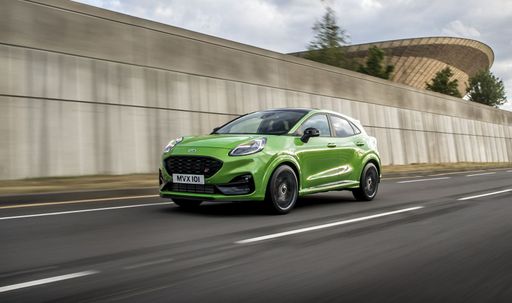 @ puma.fordpresskits.com
@ puma.fordpresskits.com
 @ puma.fordpresskits.com
@ puma.fordpresskits.com
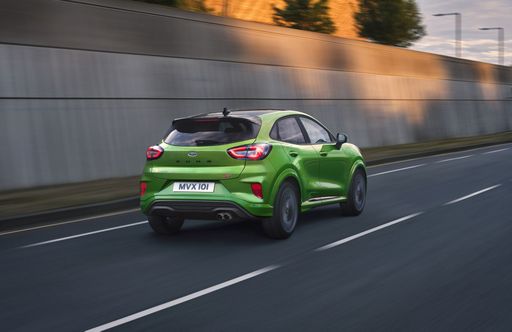 @ puma.fordpresskits.com
@ puma.fordpresskits.com
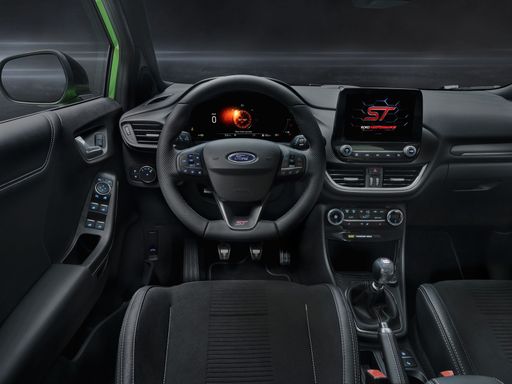 @ puma.fordpresskits.com
@ puma.fordpresskits.com
Renault Rafale
The Renault Rafale captivates with its sleek design and dynamic presence on the road, embodying the perfect blend of elegance and performance. Inside, the car offers a spacious and well-appointed cabin, featuring premium materials and cutting-edge technology to enhance the driving experience. Its agile handling and responsive capabilities make it a compelling choice for those seeking a refined yet thrilling ride.
details @ presse.renault.de
@ presse.renault.de
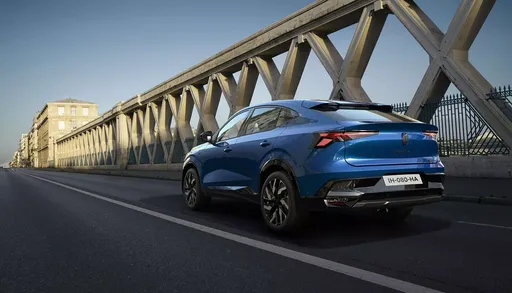 @ presse.renault.de
@ presse.renault.de
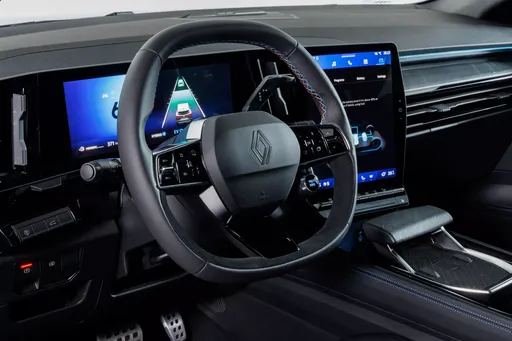 @ presse.renault.de
@ presse.renault.de
The Showdown: Ford Puma vs Renault Rafale
In the realm of compact SUVs, the Ford Puma and the Renault Rafale present an intriguing face-off. Both models are enveloped with innovative engineering, promising to deliver a blend of performance, efficiency, and style. Let's dissect their unique offerings and see how they stack up against each other.
Under the Hood: Power and Performance
Both the Ford Puma and the Renault Rafale cater to the progressive mindset of contemporary drivers. The Puma's offerings range from the petrol mild-hybrid to a purely electric drivetrain. Its engine capacities top out with a 168 HP unit, ensuring drivers have ample power with a maximum speed reaching up to 210 km/h and an impressive acceleration of 7.4 seconds from 0-100 km/h.
In contrast, Renault's Rafale brings a hybrid approach with full and plug-in hybrid options. It boasts a higher power capability with up to 300 HP, crafting a swifter drive with a 0-100 km/h acceleration in just 6.4 seconds. While the Rafale’s speed maxes out at a respectable 180 km/h, its hybrid nature makes it exceptionally efficient.
Efficiency: Fuel and Range
The environmental aspects are crucial here. The Puma exhibits fuel consumption between 5.4-6 L/100km, with its electric variant consuming 13.1-13.7 kWh/100km and an electric range up to 376 km. CO2 emissions span from zero (electric) to 136 g/km, depending on the variant.
In comparison, the Rafale shines in its hybrid prowess, delivering a consumption as low as 0.6 L/100km in its plug-in variant, alongside an electric range of 97 km. More eco-conscious drivers will appreciate its CO2 emissions as low as 14 g/km, placing it at the cusp of environmental stewardship.
Technical Innovations
Both SUVs standardize on front-wheel drive, effectively balancing performance and safety. The Ford Puma provides versatility with its options for manual and automatic transmissions, alongside features like dual-clutch automatic systems. Meanwhile, Renault opts for an automatic gearbox across its lineup, simplifying the experience for those inclined towards effortless driving.
Space and Convenience
Space optimization is vital in SUVs. The Puma, at a length fluctuating around 4226 mm, offers trunk space between 456-523 L, which should suffice for daily grocery hauls or brief excursions. Chiseled within dimensions of 4710 mm length, the Rafale offers a significantly larger trunk capacity of 627 L, catering to more extensive storage requirements.
Decoding the Payload
Carrying capability is a pragmatic aspect. The Ford Puma presents a payload ranging from 367-469 kg, enabling a mix of passenger comfort and cargo. The Rafale, though heavier in curb weight, offers a slightly lower maximum payload of 447 kg, yet compensates with its cavernous boot space.
Final Thoughts: Choosing Your Champion
The Ford Puma manifests as a dynamic choice for those seeking versatility coupled with the charm of hybrid and electric performance. Its agile frame and spirited engine choices are ideal for urban jungles and the open road alike.
On the other hand, the Renault Rafale beckons with its advanced hybrid systems and capacious interior, perfect for eco-conscious drivers who relish long journeys. Its advanced CO2 profile and comprehensive utility make it a formidable contender.
In essence, your choice between the Ford Puma and Renault Rafale rests upon what you prioritize in an SUV — be it performance, efficiency, or space. Both vehicles carry the torch of innovation, ready to sculpt the future of driving.

|

|
|
|
|
Costs and Consumption |
|
|---|---|
|
Price
24800 - 36300 £
|
Price
37500 - 49500 £
|
|
Consumption L/100km
5.4 - 6 L
|
Consumption L/100km
0.6 - 4.7 L
|
|
Consumption kWh/100km
13.1 - 13.7 kWh
|
Consumption kWh/100km
-
|
|
Electric Range
364 - 376 km
|
Electric Range
97 km
|
|
Battery Capacity
43 kWh
|
Battery Capacity
-
|
|
co2
0 - 136 g/km
|
co2
14 - 106 g/km
|
|
Fuel tank capacity
42 L
|
Fuel tank capacity
55 L
|
Dimensions and Body |
|
|---|---|
|
Body Type
SUV
|
Body Type
SUV
|
|
Seats
5
|
Seats
5
|
|
Doors
5
|
Doors
5
|
|
Curb weight
1316 - 1563 kg
|
Curb weight
1728 - 2025 kg
|
|
Trunk capacity
456 - 523 L
|
Trunk capacity
539 - 627 L
|
|
Length
4186 - 4226 mm
|
Length
4710 mm
|
|
Width
1805 mm
|
Width
1886 mm
|
|
Height
1550 - 1555 mm
|
Height
1613 mm
|
|
Payload
367 - 469 kg
|
Payload
415 - 447 kg
|
Engine and Performance |
|
|---|---|
|
Engine Type
Petrol MHEV, Electric
|
Engine Type
Full Hybrid, Plugin Hybrid
|
|
Transmission
Manuel, Automatic
|
Transmission
Automatic
|
|
Transmission Detail
Schaltgetriebe, Automat. Schaltgetriebe (Doppelkupplung)
|
Transmission Detail
Automatikgetriebe
|
|
Drive Type
Front-Wheel Drive
|
Drive Type
Front-Wheel Drive, All-Wheel Drive
|
|
Power HP
125 - 168 HP
|
Power HP
200 - 300 HP
|
|
Acceleration 0-100km/h
7.4 - 9.8 s
|
Acceleration 0-100km/h
6.4 - 8.9 s
|
|
Max Speed
160 - 210 km/h
|
Max Speed
180 km/h
|
|
Torque
170 - 290 Nm
|
Torque
-
|
|
Number of Cylinders
3
|
Number of Cylinders
3
|
|
Power kW
92 - 124 kW
|
Power kW
147 - 221 kW
|
|
Engine capacity
999 cm3
|
Engine capacity
1199 cm3
|
General |
|
|---|---|
|
Model Year
2024 - 2025
|
Model Year
2024
|
|
CO2 Efficiency Class
D, E, A
|
CO2 Efficiency Class
C, B
|
|
Brand
Ford
|
Brand
Renault
|
Ford Puma
A Glimpse into the Ford Puma: Fusing Style with Innovation
The Ford Puma stands as a testament to modern engineering fused with style. This compact SUV is not just about aesthetics but brings to the table an array of technical innovations, topped with the reliability and performance Ford is known for. Let's delve into the technical specifics and innovative features that make the Ford Puma a stellar choice for any car enthusiast.
Powertrains and Performance
The Ford Puma is offered with a range of powertrains designed to deliver optimal performance whilst minimising fuel consumption. At the heart of this compact SUV is the 1.0 EcoBoost Hybrid engine, available in both 125 PS and 155 PS variants. This engine is a marvel of engineering, optimised to deliver power efficiently with a remarkable fuel consumption ranging from 5.4 to 5.7 L/100km for manual versions, and slightly higher for the automated variants.
The top-end 1.5 EcoBoost ST variant takes performance up a notch, providing a robust 200 PS that propels the Puma from 0 to 100 km/h in just 6.7 seconds. This variant is perfect for those who prioritise performance and exhilaration in their driving experience.
Mild-Hybrid Technology
The Puma's mild-hybrid technology plays a significant role in enhancing fuel efficiency and reducing emissions. By utilising a belt-driven integrated starter/generator, the Puma recovers energy usually lost during braking, storing it in a 48-volt lithium-ion battery. This stored energy is then used to assist the engine, providing a boost during acceleration and smoothing out the stop-start technology, ultimately leading to enhanced fuel efficiency.
Design and Comfort
The Ford Puma does not compromise on style and comfort with its ergonomic and stylish design. The SUV is available in multiple trims including the ST-Line, Titanium, and the luxurious Vignale editions, each offering unique aesthetic and technological enhancements. These trim levels provide varied offerings in terms of both exterior styling and interior comfort, ensuring there's a Puma that meets every personal preference.
Inside, the Puma offers a driver-focused cockpit with advanced technological integrations such as the SYNC 3 infotainment system, providing seamless connectivity and intuitive control of the vehicle's numerous technological features.
Safety and Technology
Safety remains paramount, and the Ford Puma is equipped with the latest security and technology features. It boasts the Ford Co-Pilot360 suite which includes adaptive cruise control, pre-collision assist with autonomous emergency braking, and lane-keeping assist, enabling a safer driving experience on both city roads and highways.
Versatility and Practicality
Beyond performance and safety, the Ford Puma shines in its versatility. With a boot capacity of 456 litres, it offers ample space for all sorts of adventures, whether you're heading on a family trip or loading sports equipment. Its innovative MegaBox is an extra storage solution, providing additional space below the boot floor.
The Puma's agile handling, paired with its compact dimensions—spanning a length of 4186 to 4266 mm and a width of 1805 mm—makes it an ideal choice for urban commuting and beyond.
Conclusion
In conclusion, the Ford Puma beautifully blends practical features with cutting-edge technology, offering a package that appeals to both the tech-savvy driver and those seeking comfort and reliability. Its range of innovative features, powerful yet efficient engine options, and a design that is both functional and stylish make it a frontrunner in the compact SUV market.
Whether you're drawn by the efficient mild-hybrid engines or the robust performance of the ST variant, the Ford Puma represents a modern driving experience where innovation meets everyday usability.
Renault Rafale
Introducing the Renault Rafale: A Technological Marvel
Renault's 2024 Rafale is a showpiece of modern automotive engineering, residing elegantly within the SUV category. Boasting sleek designs alongside groundbreaking hybrid technology, the Renault Rafale promises not only to meet the demands of contemporary drivers but to exceed them.
Powertrain and Performance
Under the bonnet of the Renault Rafale, you’ll find a range of hybrid powertrain options, both full hybrid and plug-in hybrid configurations. These systems combine efficient combustion engines with electric motors, outputting between 200 and 300 PS (147 to 221 kW) to deliver dynamic performance with eco-friendly emissions, achieving fuel efficacies as low as 0.6 L/100 km.
The vehicle's top speed is 180 km/h, and drivers can expect rapid acceleration from 0 to 100 km/h in just 6.4 to 8.9 seconds, owing to the automatic transmission and refined front-wheel-drive mechanism.
Technical Specifications
Measuring an extensive 4710 mm in length, 1886 mm in width, and with a height of 1613 mm, the Rafale’s dimensions underscore its commanding road presence. Occupants benefit from a spacious interior, seating five comfortably, with an ample boot space ranging from 539 to 627 litres.
The vehicle's build focuses on a blend of lightweight materials and robust structural engineering, contributing to a kerb weight between 1728 and 2025 kg, and regulated CO2 outputs of 14 to 106 g/km. With its efficient hybrid motors, the car delivers on torque, although it is officially rated at 0 Nm due to the nature of electric drivetrain torque measurement.
Innovative Features and Design
The Renault Rafale’s innovation extends beyond its engine bay. It features a multi-mode automatic gearbox, enabling seamless transitions between various driving modes for optimal performance under different conditions. Available in Esprit Alpine, Techno, and Atelier Alpine trims, buyers are offered choices that refine the driving experience on every level.
The sophisticated exterior is matched by an equally advanced cockpit, integrating cutting-edge digital interfaces to enhance driver engagement and passenger comfort. From its infotainment system to advanced driver assistance features, the Rafale represents a marriage of futuristic functionality and luxury.
Environmental Efficiency and Pricing
The Rafale's eco-credentials are further evidenced by its competitive CO2 efficiency classes ranging from C to B, demonstrating Renault’s commitment to reducing environmental impact. The plug-in hybrid variant also offers an impressive electric range of up to 97 km, perfect for urban commuters looking to minimise fuel consumption.
Priced between €43,800 and €57,800, the Renault Rafale positions itself attractively within the premium hybrid SUV segment, offering both value and advanced technology for the discerning eco-conscious driver.
Conclusion
The Renault Rafale SUV embodies a leap forward in automotive design and engineering. It’s not just a vehicle; it’s a statement on efficiency, performance, and innovation, poised to capture the attention of drivers ready to embrace the future of motoring.
The prices and data displayed are estimates based on German list prices and may vary by country. This information is not legally binding.
